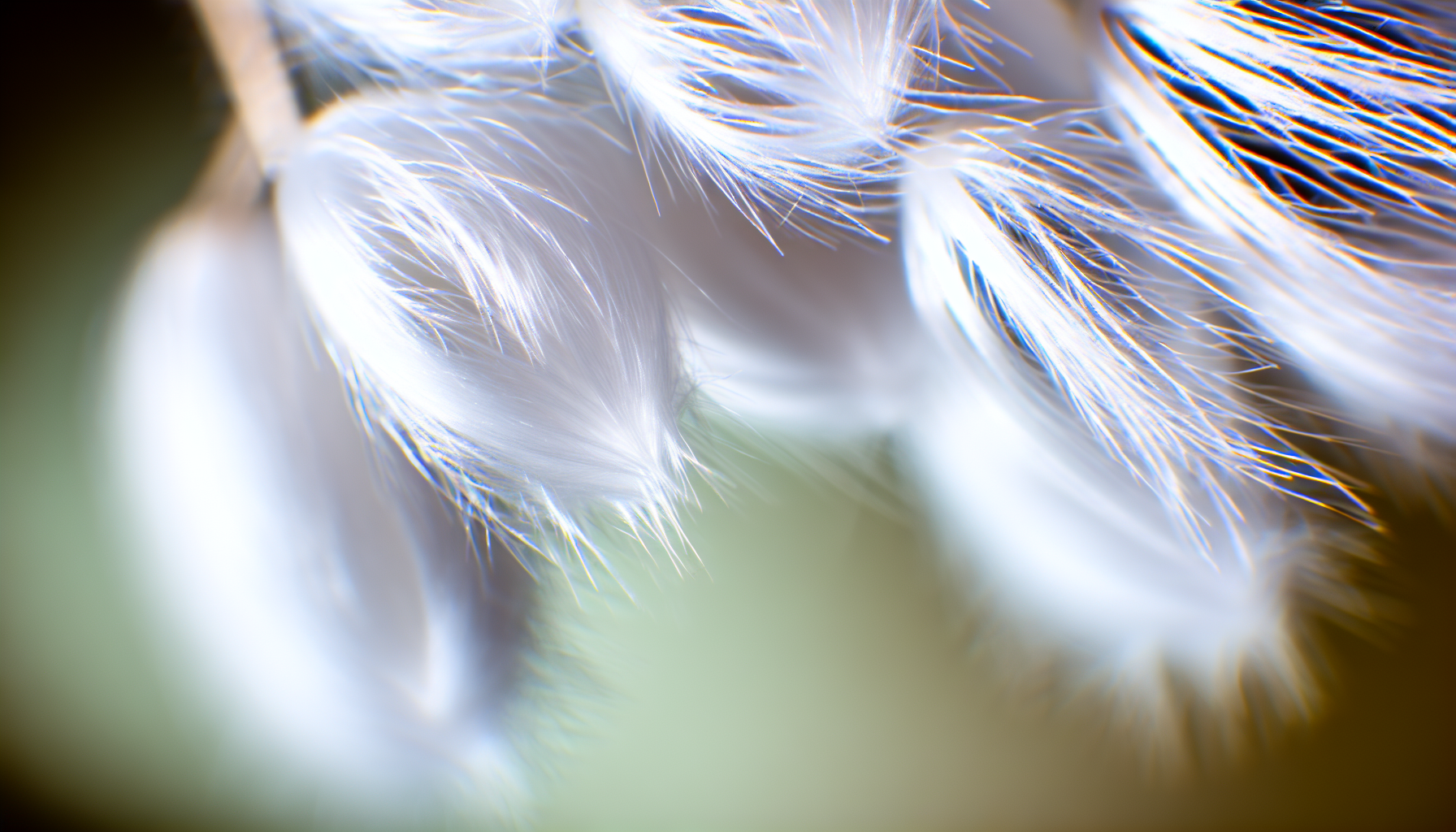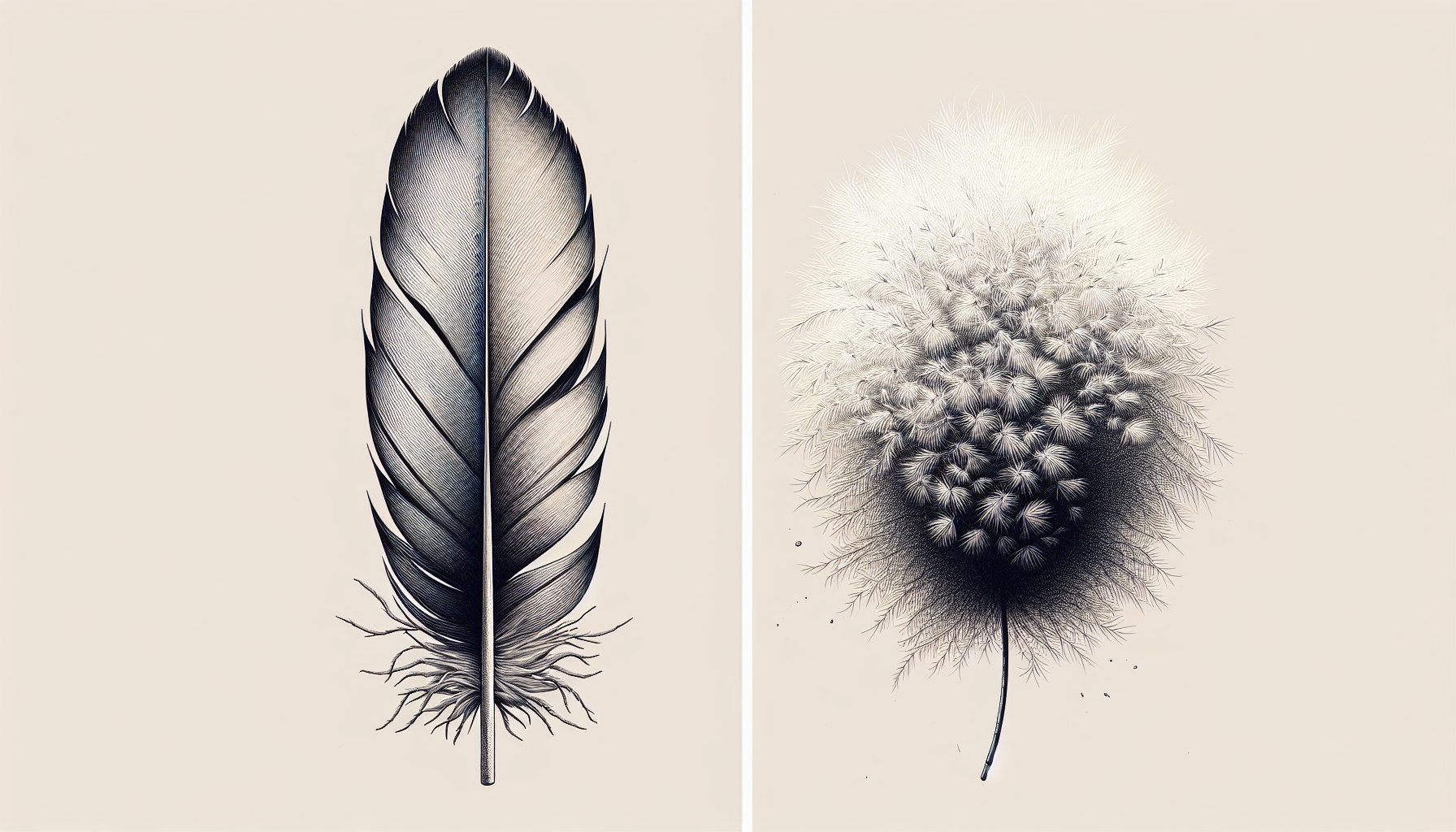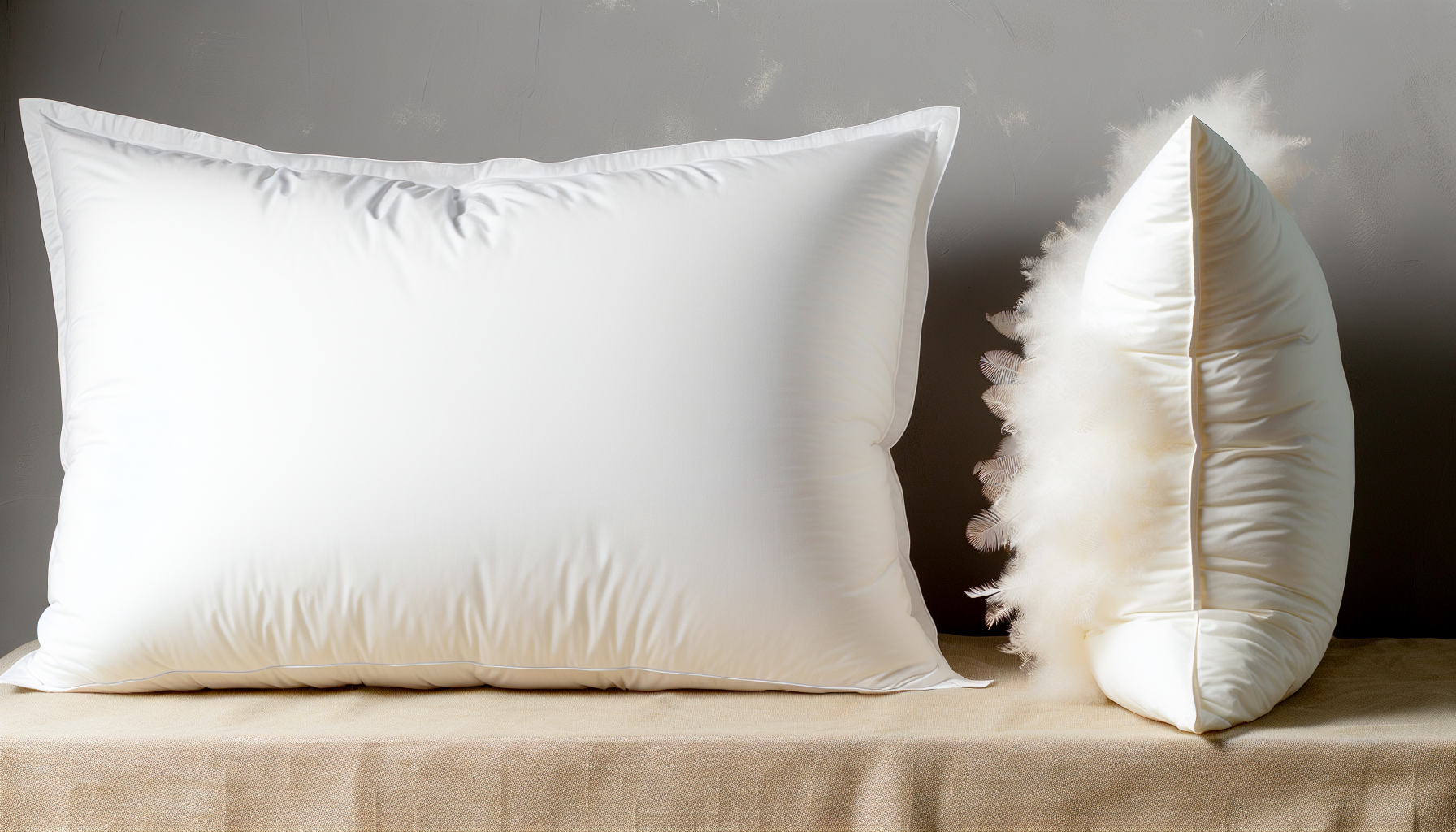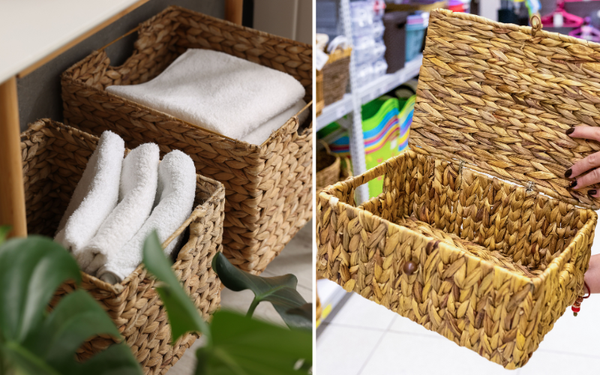Nothing quite compares to the sheer luxury of sinking into a cozy bed at the end of a long day. But what is the secret to this bliss? The answer lies in the choice of bedding, particularly the fill material. Which is better goose down or feather down, which one offers the ultimate comfort for your dreamy retreat? Let’s dive in and discover.
Key Takeaways
- Goose down provides superior softness, warmth, and is highly durable with a higher cost, while feather down is more affordable, firmer, and can occasionally cause discomfort with protruding quills.
- Bedding fill choice should consider factors such as allergies, sleep position, quality of the fill, and ethical sourcing, with hypoallergenic options available for down and feather bedding to minimize allergens.
- Proper care, including minimal washing, thorough drying, and appropriate storage, is essential for maintaining the performance and extending the life of both down and feather bedding, with environmental sustainability favored by down.
Down vs. Feather: Uncovering the Differences

Down and feather, both derived from ducks or geese, are highly sought after for their warmth and softness. Yet, they possess distinct characteristics that make them stand apart. Down, the fluffy undercoat of the bird, is composed of small down fibres without a central quill, offering a light and fluffy texture.
On the other hand, feathers have a central quill with fibers sprouting from it, aligning to create a more supportive structure for your pillow. The choice between the two often boils down to personal preference, cost, and durability considerations. While down is more costly and offers a softer feel, feather material, though less expensive, may lack long-term structural support and can cause discomfort due to hard quills.
Down Clusters Explained
The secret behind the irresistibly soft and warm down product lies in its unique structure. Down clusters are round and spherical, radiating thousands of tiny fibers from the center. This structure excels at trapping heat and providing loft in bedding products, which positions down as one of the top choices for pillow fillings that ensure a cozy sleep.
Hungarian goose down, with 850 fill power, stands out with its large and resilient clusters, offering exceptional loft and durability. Unlike feathers with their pronounced quills, down clusters reduce the chance of poke-through, enhancing the overall softness of the bedding.
Feather Structure and Function

Feathers, while structurally different from down, have their own merits in bedding. Composed of a well-defined quill and small hair-like strands, feathers add bulk and support to the bedding, making them ideal for those seeking a firmer pillow. However, their larger size and stiffness may not offer the same level of softness as down, and their quills can sometimes poke through bedding fabrics, leading to discomfort.
Pros and Cons: Goose Down and Feather Down Compared

To gain a clearer picture of the differences between goose down and feather down, we will compare their respective advantages and disadvantages. Goose down, distinguished by its larger clusters, provides a softer and warmer filling for down pillows. Hungarian goose down, in particular, is renowned for its fluffy, durable qualities and warmth, making it a prime choice for luxurious bedding fill.
On the other side of the spectrum, feather pillows offer affordability and better support but may lack the desired softness and insulation. Moreover, the presence of quills can lead to discomfort, an issue not typically associated with down pillows.
Benefits of Goose Down
The allure of goose down extends beyond its lavish feel and radiates into its superior insulation properties. Composed of lighter goose plumage, goose down effectively traps more heat, offering unparalleled warmth for a comfortable sleep. The fine, fluffy clusters of goose down conform to the body, offering an exquisite softness.
Additionally, the long-lasting nature of goose down is due to its high fill-power ratings and robust clusters, guaranteeing that your bedding will endure over time.
Drawbacks of Goose Down
Despite its many advantages, goose down does come with a few drawbacks. The foremost being its higher cost, attributed to the challenging separation process it requires, making it more expensive than other types of fill. Allergenic concerns are another potential downside, with common allergens such as dust mites, dust, and sometimes duck feathers being associated with goose down. However, it’s worth noting that true down and feather allergies are relatively uncommon, affecting less than 0.5% of the adult population.
Advantages of Feather Down
For those seeking a cost-effective bedding solution, feather down may be the answer. Its affordability is a major selling point, allowing more consumers to experience the comfort of natural bedding without breaking the bank.
When it comes to support, feather down holds its ground with the firm structure of feathers providing a supportive sleep surface, a feature particularly beneficial for those who prefer a firmer feather pillow with a feather core, making it the perfect pillow. To maintain its quality and protective feather covering, using a pillow protector is highly recommended.
Disadvantages of Feather Down
While feather down has its benefits, it’s not without its shortcomings. Its insulation value falls short when compared to down fill, which can trap more air and provide more insulation. Furthermore, the stiffness of feathers and the presence of long quills can lead to an unpleasant sleeping experience, as they have the potential to poke through the bedding.
Absorption of moisture in feather down can also lead to decreased insulative properties and potential odors, making proper care essential.
How to Choose the Right Bedding Fill: Factors to Consider

Choosing the right bedding fill isn’t solely a matter of preference. Several factors come into play, including allergies, sleep position, and quality requirements. Bedding can retain dust and house dust mite allergens, which can trigger allergies. Furthermore, certain chemical treatments used in bedding may lead to allergic reactions or sensitivities.
One’s sleeping position is a contributing factor in the selection of bedding fill. Feather bedding’s supportive nature may be beneficial for side sleepers, whereas those who sleep on their backs might lean towards the softness of down. It’s essential to choose the right bedding to help you fall asleep comfortably.
Lastly, the quality of the fill material, its fill weight, and the outer covering are crucial considerations, affecting the durability and comfort of the bedding.
Allergies and Sensitivities
For individuals with allergies and sensitivities, the choice of bedding fill is paramount. Down and feather bedding can retain allergens such as:
- dust mites
- pollen
- pet dander
- dust
There have also been reported cases of lung inflammation caused by breathing in dust from feather bedding. Hence, healthcare professionals often advise against using down and feather bedding for individuals with sensitivities.
Hypoallergenic down bedding, with its tightly woven fabrics and special finishes, can deter allergens and maintain the cleanliness and freshness of the bedding.
Sleep Position and Support Needs
Your sleep position is another significant factor when choosing between down and feather bedding. Down fill, with its soft texture, can conform to the body’s shape, providing adaptable support for back sleepers. Feather fill, on the other hand, promotes airflow and can be easily shaped to meet the sleeper’s preference, offering support for various sleep positions.
The choice of down pillow fill for back sleepers typically leans towards down or down alternative fills, as these materials offer the necessary support for this sleeping position. To maintain the quality and longevity of your down pillow, using pillow protectors is highly recommended.
Quality and Durability
The quality and durability of the bedding fill are crucial considerations that directly impact the comfort and longevity of the bedding. Factors such as the loft (fluffiness) of the feathers and the fill power determine the quality of down and feather bedding. Goose down, with its larger plumules, higher fill power, and durability, is seen as a higher quality option.
Both down and feather bedding can last long with proper care. Nevertheless, signs of substandard quality, such as a heavy and limp feel or visible signs of wear and tear, should prompt consideration of replacement.
Caring for Your Down or Feather Bedding

Maintaining your down or feather bedding appropriately is key to preserving its lifespan and peak performance. While down pillows and other down-filled items can be washed, it is recommended to do so minimally to maintain their quality. Ensuring the down item is completely dry before using it again or storing it away is crucial to prevent mold and mildew.
If an odor is noticed after several years, it may be an indication that the item is no longer in optimal condition, and replacement should be considered.
Cleaning and Washing
The frequency and method employed in washing your down or feather bedding are significant factors. Here are some recommendations:
- Down-filled bedding should be washed annually
- Feather down duvets should be washed at least every 2 - 3 months
- Use a warm-water wash and a gentle cycle when machine washing down or feather bedding
- Use a mild or down-specific detergent
- Dryer balls can assist in fluffing the bedding back to its original shape
- Avoid fabric softeners as they can damage the down’s loft and insulating properties.
Improper washing can lead to loss of comfort and may trigger health issues such as unexplained breathlessness due to bedding dust.
Storage and Maintenance
Proper storage of your down or feather bedding is a contributing factor to preserving its quality and aesthetic. It is recommended to store them in a large cotton storage bag or a breathable fabric bag, away from plastic which can trap moisture.
Ensuring the bedding is completely dry before storing, avoiding compressing it too much, and storing it in a cool, dry and well-ventilated space is paramount to preserve its quality.
Ethical Considerations: Sourcing and Sustainability
The selection of bedding fill affects not just your comfort but also contributes to broader sustainability concerns. Down and feather production for bedding materials is considered sustainable due to its lower environmental impact compared to synthetic materials like polyester. Ethical sourcing practices involve ensuring traceability and conducting rigorous testing to maintain ethical standards.
Down and feathers have a lower environmental impact, with down being biodegradable and having a lower carbon footprint, making it a more sustainable choice.
Summary
In conclusion, the choice between goose down and feather down for your bedding hinges on personal preferences, comfort needs, and ethical considerations. Both offer their unique advantages, with goose down offering superior softness and insulation, and feather down providing firmness and affordability. Understanding their differences, along with considering your sleep position, allergies, and quality requirements, can guide you to the perfect pillow or duvet for a luxurious sleep experience.
Frequently Asked Questions
Is goose down or goose feather warmer?
Goose down is much warmer than goose feathers, making it the better choice for bedding like comforters and pillows. Feathers are not ideal for providing the same level of warmth.
Which type of down feathers are the best?
European goose down feathers are considered the best due to their larger and pure white clusters, making them softer and warmer for pillows.
Is goose down worth the money?
Yes, goose down is worth the money as it is a long-lasting investment in bedding that maintains its quality over time.
Why is goose down more expensive?
Goose down is more expensive because it is difficult to obtain and the quality varies based on the age of the geese, with adult geese providing the highest quality down.
What are the main differences between down and feather?
The main differences between down and feather are that down is lighter, fluffier, and lacks a central quill, while feathers have a structured quill with fibers. Down is softer and better for insulation, while feathers offer more support but less softness.
You Might Also Like...










